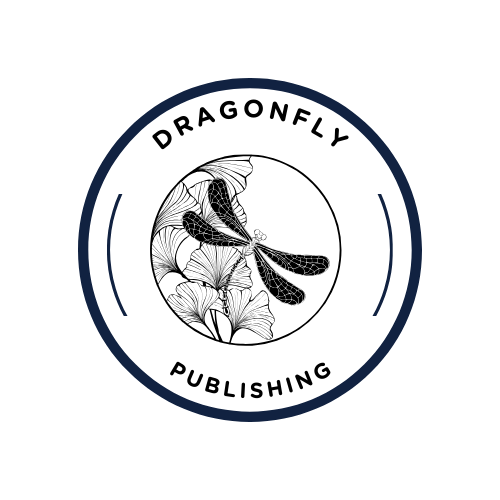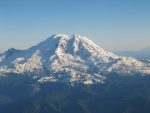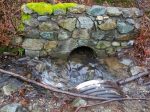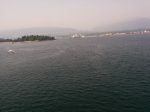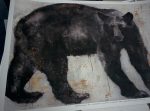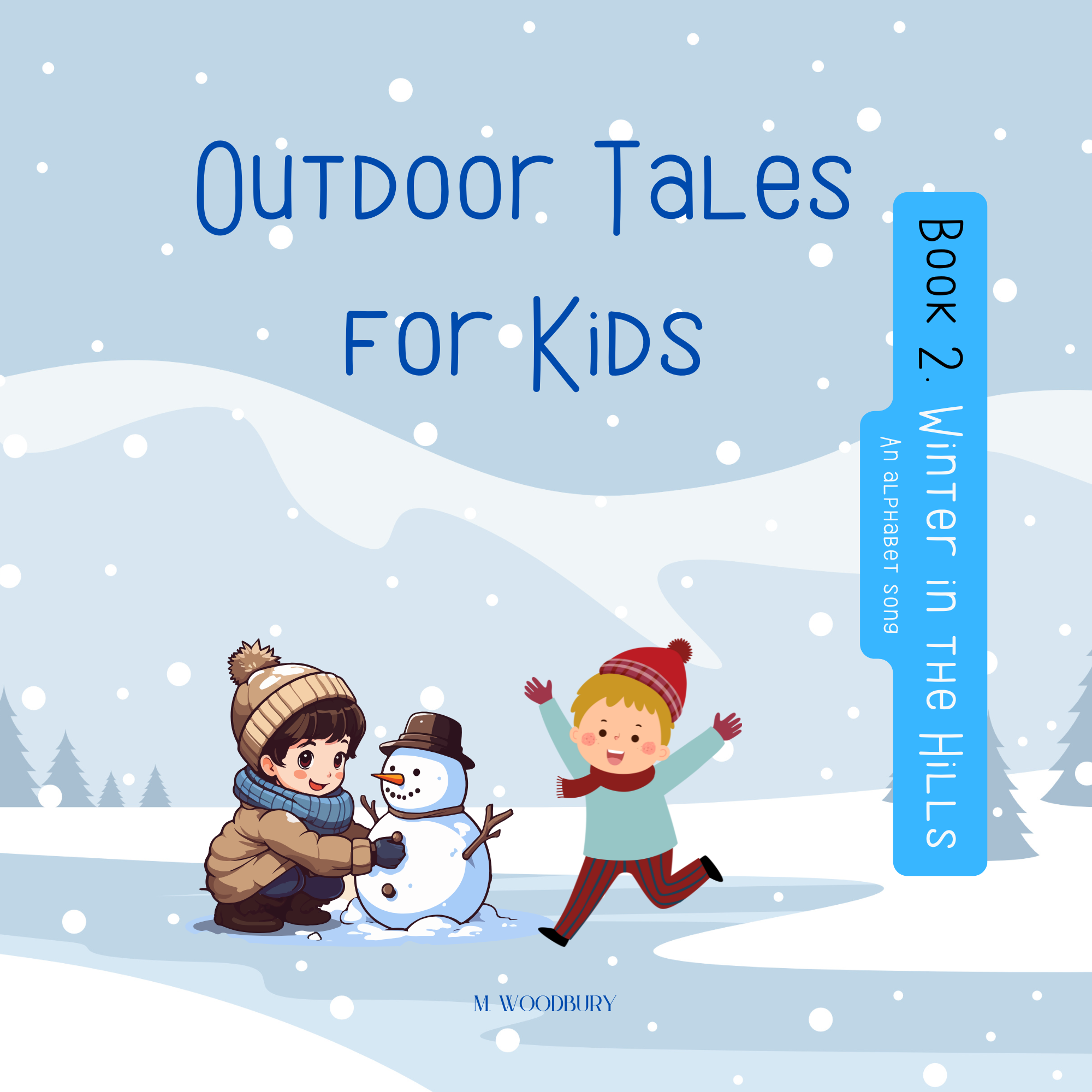In keeping with my ideas of the planet as as our collective body, or keeping fit as an analogy to curbing climate change, we do fall at times and just have to brush ourselves and get back up. Sunday morning I went to a nearby park, my favorite urban rainforest. I went early to beat the heat. Most of the trails are completely shaded, and though it isn’t as hot as it was a couple weeks ago, I prefer to stay out of the direct sunlight when it’s above 25 or so, when running. It really starts to get to me after a kilometer or two. This park has challenging hills too. My total elevation for the week was just under 500 feet.
The forest trails are at times serene and isolated, but on weekends have a lot of other runners and dog-walkers. Everyone wants to get outside. I admire the number of people doing just that. Because I listen to music on headphones when running, I try to stay to the far right of the trail when running. That way I stay out of the way of faster runners or bicyclists. Toward about the 4K mark of the perimeter trail, I entered a section where the path was in the direct sunlight. The last news I read about our water table was that it’s at 66%, down from 79% when I first started writing about the drought. Our city is still at level 3 water restriction and at level 4 drought (map).
What this means, even for places like urban forests in the lower mainland, is that some of the normally compact, moist trails are dryer than usual. I was running on the far right of a trail that was part dirt and gravel, and wiped it on a section that had very loose pebbles, leading down an embankment. My ankle gave way in this gravel, and I fell, with a slide, ending flat on my butt. I caught myself with my left hand, but still scraped up my left leg, left hand, and left elbow and arm. Luckily, there were no strains or breaks (when this happened nobody else was around, including a runner I’d been pacing behind the whole time who had just exited the trail). But at the time I got a lot of dirt and blood all over me. I arose, shook myself off, and increased my pace, with a slow smile. I always laugh at my own mishaps. At the time, just for a quick moment, I felt proud of my running wounds. I had now reached a runner’s milestone. I shared it with the running group later, and one of the comments was, “You aren’t a real runner until you have to pull off into the bush to poop.” This has not happened to me yet, though it has to my husband.
The incident reminds me that despite our good intentions, we do make mistakes. We have accidents. It’s important not to let these things get us down. Hopefully we can laugh at ourselves and get up again. And we do have a lot of work to do right now, increasingly more and more. The Washington Post recently reported a NASA study about how the world is running out of water. This is scary stuff. The scary stuff dooms us, and I think it’s easy to get paralyzed by fear–paralyzed into inaction and denial. This blog is about getting up and running. It’s about taking care and not being afraid. It’s also about appreciating the nature that remains, and doing what we can to help it out, because we cannot, at this point, really stop climate change.
I recently interviewed M Jackson, who studies glaciers and leads Arctic student expeditions for National Geographic. We talked about her new book While Glaciers Slept, which is beautifully written and inspiring. In her book are these wonderful descriptions of glaciers. Once she and her students hiked up Thorofare Ridge in Alaska, which is in the Denali National Park and Reserve, a land sculpted by ice and covered with glaciers. Once there, they ran, they jumped, they yelled. It was a freeing moment, one watched over by the old frozen giants we respect with awe. I asked her how it felt in that letting-go, pure rejoicing moment, with the background knowledge that these glaciers were slowly disappearing. She said:
Just like being out on Svinafellsjokull last month—these places are changing. But importantly, glaciers are not all gone. Often we narrate glaciers as if they are ruins of a different time, features of a landscape that no longer exists. Glaciers are very much real, very much still present on this planet. Glaciers are worth advocating for, worth standing up and saying—the way we live today cannot continue. A world without glaciers is not a world I’m interested seeing to fruition. We have so much work to do to make a different future, and I think the energy is building to make it possible!
The last thought about good energy to do what’s right for living in a world with glaciers is what we should focus on here. I figure if we have the power to screw up this old world, we have the power to admit our mistakes and get up and try to fix it best we can.
